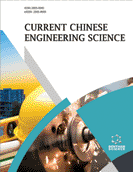Abstract
Additive manufacturing (AM) is widely known as a method of
manufacturing components and parts from powder or wire elements emanating from
layer by layer processing. Surface quality is a critical characteristic of any product
manufactured additively. Hence, this study presents a process of selective laser melting
used to manufacture 10 mm thin-walled metal tubes in cubes from Ti6Al4V powders.
The laser used was an IPG YLS 500 Ytterbium fibre laser operating at 1076 nm
wavelength with a 50 μm fibre delivery system using different laser contour scanning
parameters. The scanner used was an Intelliweld 30 FC V system. A custom-built
selective laser-melting platform enclosed within an inert glovebox enclosure was used
for the part building. A complementary surface engineering strategy was employed
using the statistical model approach of response surface methodology (RSM) to analyse
the surface finish quality of SLM fabricated Ti6Al4V alloy. The selected variables
optimised were the power density and consolidation rates, with their interactive effect
on the experimental responses (surface roughness and top edge quality). The results
obtained indicated that higher consolidation rates and mid-range power densities had
better surface finishes due to a more stable melt pool. The findings of this work will
add to the understanding of the process design and optimisation of components
manufactured additively in order to promote the integrity of the developed product.
Keywords: Additive manufacturing, RSM, Selective laser melting, Surface quality.






















